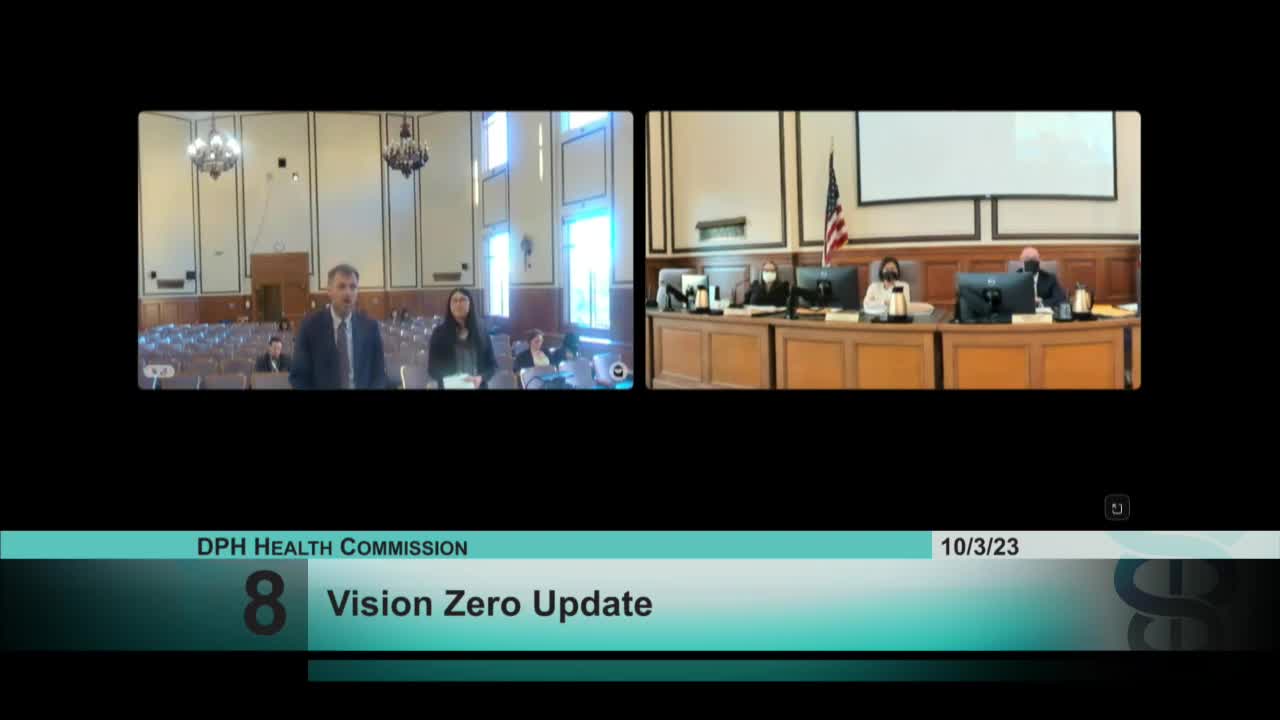San Francisco prioritizes protected bike lanes and data-driven traffic safety measures
October 03, 2023 | San Francisco City, San Francisco County, California
This article was created by AI summarizing key points discussed. AI makes mistakes, so for full details and context, please refer to the video of the full meeting. Please report any errors so we can fix them. Report an error »

In a recent meeting held by the City of San Francisco, officials discussed critical updates on transportation safety and infrastructure, particularly focusing on the implementation of protected bike lanes and the evaluation of traffic safety measures. The meeting highlighted the city's commitment to improving cyclist safety through the introduction of physically separated bike lanes, which have been shown to enhance both safety and comfort for riders. This shift away from traditional painted bike lanes aims to address the growing demand for safer cycling options in the densely populated urban environment.
The discussion also emphasized the importance of "slow streets," where traffic calming measures are implemented to ensure safe sharing of roadways without the need for physical barriers. Officials noted that these strategies are particularly effective in low-speed, low-volume residential areas, allowing for a more community-friendly approach to urban mobility.
A significant aspect of the meeting was the introduction of a comprehensive evaluation program, which collects data before and after the implementation of new projects. This program not only tracks the number of cyclists and incidents but also utilizes video data to analyze close calls between cyclists and vehicles, providing valuable insights into traffic dynamics.
Concerns regarding autonomous vehicles were raised, particularly in light of a recent incident involving an autonomous vehicle. Officials acknowledged the need for thorough data collection to understand the role of these vehicles in traffic safety and their potential impact on existing infrastructure. The city is committed to a data-driven approach, ensuring that decisions are based on solid evidence rather than speculation.
Additionally, the meeting addressed the challenges posed by the city's density, particularly in business districts where the need for deliveries and parking complicates transportation planning. Officials stressed the importance of community engagement in the design process, ensuring that the needs of local businesses and residents are considered in transportation projects.
In conclusion, the meeting underscored San Francisco's proactive approach to enhancing transportation safety and infrastructure. With ongoing evaluations and community involvement, the city aims to create a more accessible and safer environment for all road users. The next steps will involve further data analysis and community feedback as the city continues to adapt its strategies to meet the evolving needs of its residents.
The discussion also emphasized the importance of "slow streets," where traffic calming measures are implemented to ensure safe sharing of roadways without the need for physical barriers. Officials noted that these strategies are particularly effective in low-speed, low-volume residential areas, allowing for a more community-friendly approach to urban mobility.
A significant aspect of the meeting was the introduction of a comprehensive evaluation program, which collects data before and after the implementation of new projects. This program not only tracks the number of cyclists and incidents but also utilizes video data to analyze close calls between cyclists and vehicles, providing valuable insights into traffic dynamics.
Concerns regarding autonomous vehicles were raised, particularly in light of a recent incident involving an autonomous vehicle. Officials acknowledged the need for thorough data collection to understand the role of these vehicles in traffic safety and their potential impact on existing infrastructure. The city is committed to a data-driven approach, ensuring that decisions are based on solid evidence rather than speculation.
Additionally, the meeting addressed the challenges posed by the city's density, particularly in business districts where the need for deliveries and parking complicates transportation planning. Officials stressed the importance of community engagement in the design process, ensuring that the needs of local businesses and residents are considered in transportation projects.
In conclusion, the meeting underscored San Francisco's proactive approach to enhancing transportation safety and infrastructure. With ongoing evaluations and community involvement, the city aims to create a more accessible and safer environment for all road users. The next steps will involve further data analysis and community feedback as the city continues to adapt its strategies to meet the evolving needs of its residents.
Don't Miss a Word: See the Full Meeting!
Go beyond summaries. Unlock every video, transcript, and key insight with a Founder Membership.
✓
Get instant access to full meeting videos
✓
Search and clip any phrase from complete transcripts
✓
Receive AI-powered summaries & custom alerts
✓
Enjoy lifetime, unrestricted access to government data
30-day money-back guarantee

